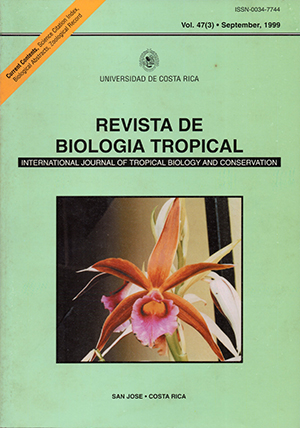Abstract
Tbis paper describes tbe fossils, materials and paleoenviromnental conditions found in some outcrops near tbe town of Jesús María, Turrialba, Costa Rica. Tbe rock materials (reefal limestone, sandstones and conglomerates) are associated to tbe Punta Pelada Forrnation of Upper Oligocene tu Lower Miocene age. Outcrops are of reduced extent and are unevenly distributed, hence tbey are considered as patch reefs developed by enviromnental energy fluctuations, sea level changes and clastic sedimentation from sources on small islands acting togetber in narrow platforrns. Tbe structural and enviromnental characteristics where fossil communities developed were derived from tbe analysis of 460 samples containing 36 species. Tbe reefs represent low diversity communities comprising four coral species (three of tbem reef builders), 31 mollusks species (21 gastropods: a new species, 14 camivores, three herbivores and three of uncertain feeding habits; 10 bivalves species: five endobentbic and five epibentbic); algae ( at least three groups represented); sea urchins; foraminifers; crabs. Tbe eveuness index is low, mainly regarding tbe Scleractinian corals, where Antiguastrea cellulosa predominates (80% óf tbe recognized forrns). Tbe fossil assemblage suggests tbat tbe comm\lnities developed in shallow marine enviromnents (50-80 m deptb), affected by sea level changes, strung marine currents and clastic imput from nearby small islands.
##plugins.facebook.comentarios##

This work is licensed under a Creative Commons Attribution 4.0 International License.
Copyright (c) 1999 Revista de Biología Tropical






